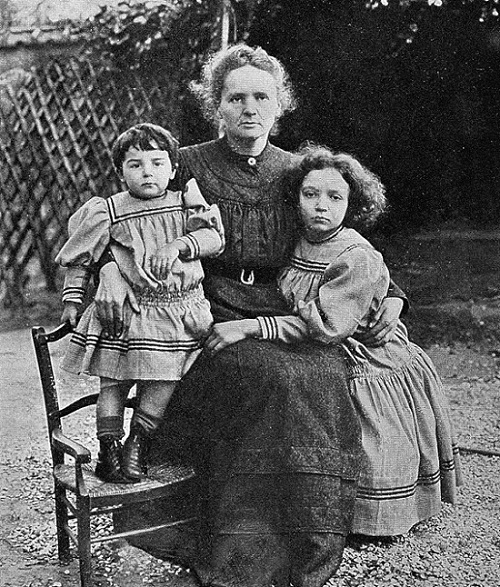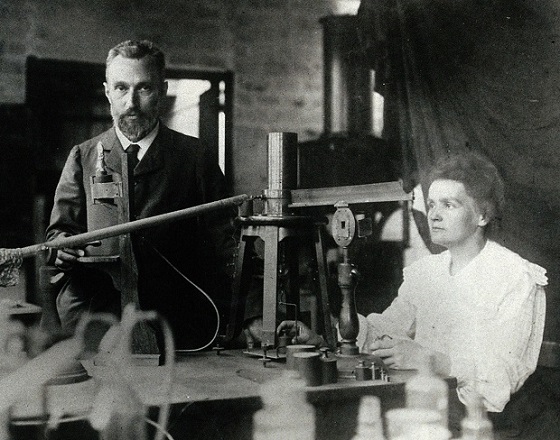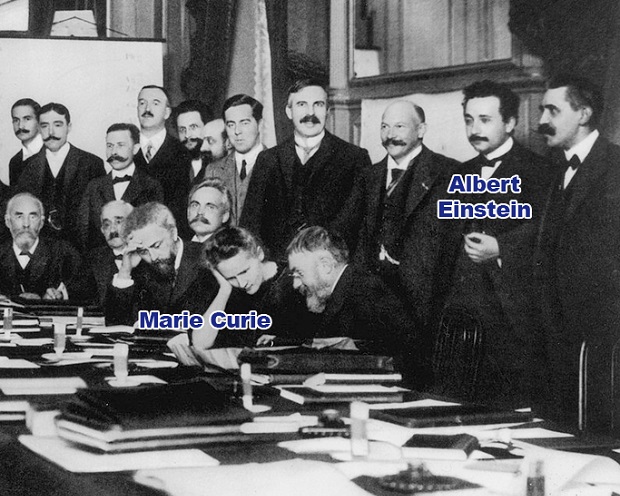Share on:
Who is Marie Curie?
Marie Curie was the first person ever to receive two Nobel Prizes: the first in 1903 in physics, shared with Pierre Curie (her husband) for the discovery of the phenomenon of radioactivity, and the second in 1911 in chemistry for the discovery of the radioactive elements polonium and radium.
Biography of Marie Curie
Maria Sklodowska, later known as Marie Curie, was born on November 7, 1867, in Warsaw (Poland). Curie was the youngest of five children. Both of Curie's parents were teachers. Her father was a math and physics instructor. When she was only 10, Curie lost her mother to tuberculosis.
After her mother died and her father could no longer support her she became a governess, reading and studying in her own time to quench her thirst for knowledge. She had a bright and curious mind and excelled at school.

In 1891, Curie finally made her way to Paris and enrolled at the Sorbonne. When Curie registered at the Sorbonne, she signed her name as «Marie» to seem more French. She completed her master's degree in physics in 1893 and earned another degree in mathematics the following year.
One of Curie's professors arranged a research grant for her to study the magnetic properties and chemical composition of steel. That research project put her in touch with Pierre Curie, who was also an accomplished researcher.
The two were married in the summer of 1895. The Curie's had two daughters. Irene, the oldest, was born in 1897 two years after Pierre and Marie married. Daughter Eve was born seven years later.

Pierre died tragically run over by a horse drawn carriage in 1906. Despite her tremendous grief, she took over his teaching post at the Sorbonne, becoming the institution's first female professor.
Curie visited Poland for the last time in early 1934. A few months later, on 4 July 1934, she died aged 66 from aplastic anemia believed to have been contracted from her long-term exposure to radiation, causing damage to her bone marrow.
Radioactivity, Polonium and Radium
The Curies became research workers at the School of Chemistry and Physics in Paris and there they began their pioneering work into invisible rays given off by uranium – a new phenomenon which had recently been discovered by Professor Henri Becquerel.
Curie conducted her own experiments on uranium rays and discovered that they remained constant, no matter the condition or form of the uranium. The rays, she theorized, came from the element's atomic structure. This revolutionary idea created the field of atomic physics.
Curie experimented with a uranium-rich ore called pitchblende and found that even with the uranium removed, pitchblende emitted rays that were stronger than those emitted by pure uranium. She suspected that this suggested the presence of an undiscovered element.
In March 1898, Curie documented her findings in a seminal paper, where she coined the term «radioactivity.». Curie stated that measuring radioactivity would allow for the discovery of new elements. And, that radioactivity was a property of the atom.

Pierre and Marie Curie set about working to search for the unknown element. They ground up samples of pitchblende, dissolved them in acid, and began to separate the different elements present.
Eventually, they extracted a black powder 330 times more radioactive than uranium, which they called polonium, after Marie Curie's native country, Poland. Polonium was a new chemical element, atomic number 84.
When the Curies investigated further, they found that the liquid left behind after they had extracted polonium was still extremely radioactive. They realised that pitchblende contained another new element, far more radioactive than polonium, but present in even smaller quantities.
By the end of that year, they had isolated a second radioactive element, which they called radium, derived from "radius," the Latin word for rays. In 1902, the Curies announced their success in extracting purified radium.
In 1902 Marie eventually isolated a second radioactive element, which they called radium (derived from «radius,» the Latin word for rays), determining its atomic weight as 225.93. The journey to the discovery had been long and arduous.
Marie Curie Nobel Prize
In 1903 Marie and Pierre were awarded the Nobel Prize for Physics jointly with Henri Becquerel for their combined, though separate, work on radioactivity. The nominating committee initially objected to including a woman as a Nobel laureate, but Pierre Curie insisted that the original research was his wife's.

Her determination and remarkable endeavours led to a second Nobel Prize in 1911, this time in chemistry for creating a means of measuring radioactivity. Not long after, Sorbonne built the first radium institute with two laboratories; one for study of radioactivity under Marie Curie's direction, and the other for biological research into the treatment of cancer.
🥇 Movie review & film summary:
✅ Radioactive: tells the story of Marie Curie, a two-time Nobel Prize winner
✅ Paradise: selling our age in exchange for money
✅ Oppenheimer: about the father of the atomic bomb
✅ Sound of freedom: about the world of child sex trafficking
✅ The Pope's exorcist: based on the life of the chief Vatican exorcist

